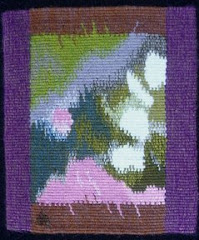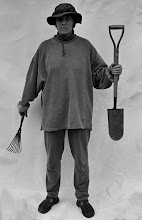Up to now, I assumed that most of my readers were fellow tapestry weavers. Perhaps not, since I give out my cards to lots of random people. So in case you were wondering….
Tapestry is a weaving technique that creates an image or pattern by using discontinuous weft.
Discontinuous what?
The WARP is the yarn that is attached to the loom and kept under tension; in this case, it’s the white cotton that runs vertically. The WEFT is the yarn that weaves under and over the warp threads to create the fabric.

That’s different from most clothing fabrics, where you can see both the warp and the weft. These are 2 different scarves that I wove a few years ago.

Pretty simple, right? Actually it takes a lot of practice to be able to weave even a simple tapestry like the one above.
What about tapestry designs that are a lot more complex?

The original was woven around 1500, and hangs in the Cloisters, in New York City.
For more about the Hunt of the Unicorn tapestries, and the project at Stirling Castle, see my previous blogpost here.
For more information about tapestry weaving check out the American Tapestry Alliance website.



1 comment:
Gosh I love Unicorn in Captivity :)
Post a Comment